Principles of Finance with Excel (Основы финансов c Excel)
Подождите немного. Документ загружается.

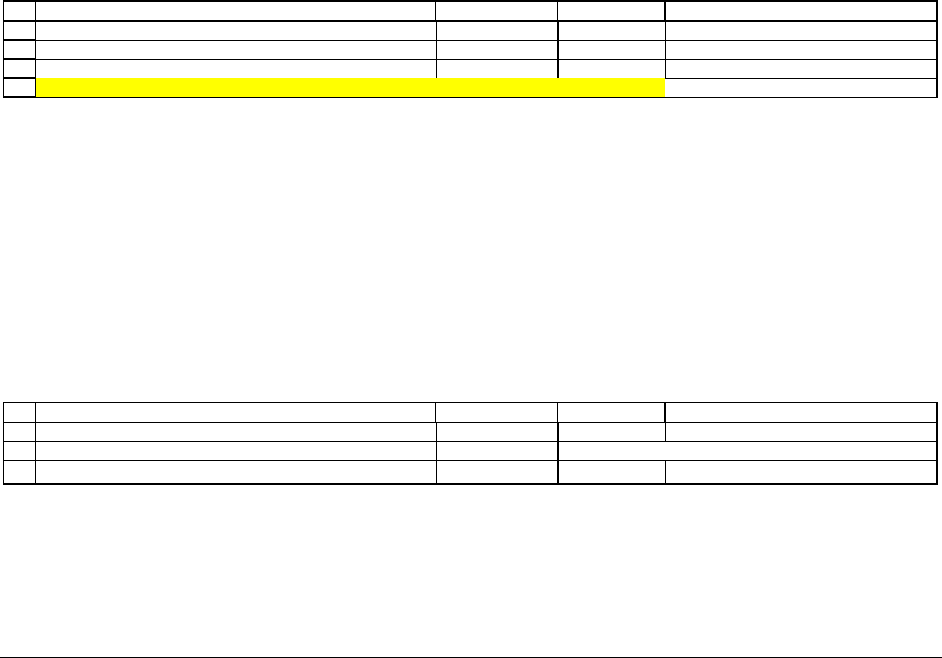
PFE Chapter 18, Stock valuation Page 31
Computing the market value of Target’s equity, E
Target has 908,164,702 shares outstanding (cell B47, Figure 18.5). On 1 February 2003,
the day of the company’s annual report for its 2002 financial year, the stock price of Target was
$28.21 per share. Thus the market value of the company’s equity is 908,164,702*$28.21=
$25,619,326,243. Note that in the spreadsheets all numbers appear in millions, so that Target’s
equity value appears as E = $25,619.
Computing the market value of Target’s debt, D
The Target balance sheets differentiate between short term debt (“Current portion of
long-term debt and notes payable”—row 34 of Figure 18.5) and long-term debt (row 37). For
purposes of computing the debt for a WACC computation, both of these numbers should be
added together. This gives debt for Target as:
6
7
8
9
ABCD
2002 2001
Current portion of long-term debt and notes payable 975 905
Long-term debt in 2002 and 2001 (columns B and C)
7,523 7,054
Total debt, D
8,498 7,959 <-- =C8+C7
Estimating the cost of debt r
D
A simple method to compute the cost of debt r
D
is to calculate the average interest cost
over the year. In 2002 Target paid $588 interest (cell B9, Figure 18.5) on average debt of
$8,229. This gives
11
12
13
ABCD
Interest paid, 2002
588
Average debt over 2002
8,229 <-- =AVERAGE(B9:C9)
Interest cost, r
D
7.15% <-- =B11/B12
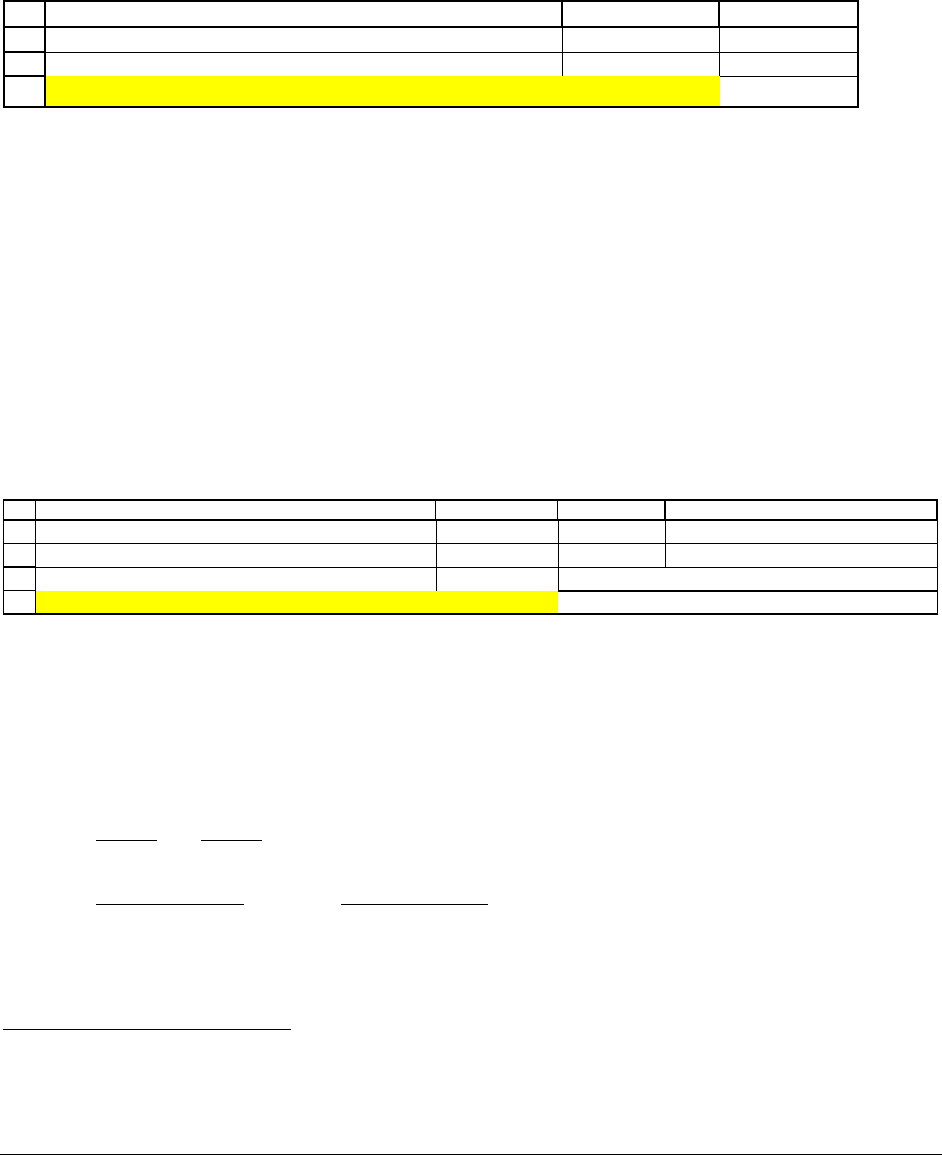
PFE Chapter 18, Stock valuation Page 32
Target’s income tax rate T
C
In 2002 Target paid taxes of $1,022 on earnings of $2,676 (cells B11 and B10
respectively of Figure 18.5). Its income tax rate was therefore 38.19%:
17
18
19
ABC
Earnings before taxes, 2002
2,676
Income taxes
1,022
Corporate tax rate, T
C
38.19% <-- =B18/B17
Computing Target’s cost of equity r
E
using the SML
The SML equation for computing Target’s cost of equity r
E
is given by:
(
)
*
Ef E M f
rr Er r
β
⎡
⎤
=+ −
⎣
⎦
,
Yahoo gives Target’s
β
as 1.16. In February 2003, the risk-free rate r
f
was 2% and the expected
return on the market
(
)
M
Er was 9.68%.
5
This gives Target’s cost of equity as r
E
= 10.91%:
21
22
23
24
ABCD
Equity beta, β
E
1.16
Risk-free rate, r
f
2%
Expected market return, E(r
M
)
9.68% <-- See discussion below
Cost of equity, r
E
10.91% <-- =B22+B21*(B23-B22)
Putting it all together
Now that we’ve done all the calculations, we can compute Target’s WACC:
()
()
1
25,619 8,498
10.91% 7.15% 1 38.19%
25,619 8,498 25,619 8,498
9.29%
EDC
ED
WACC r r T
ED DE
=+ −
++
=+ −
++
=
5
To see how
()
M
E
r was derived, see the boxed discussion on page000.
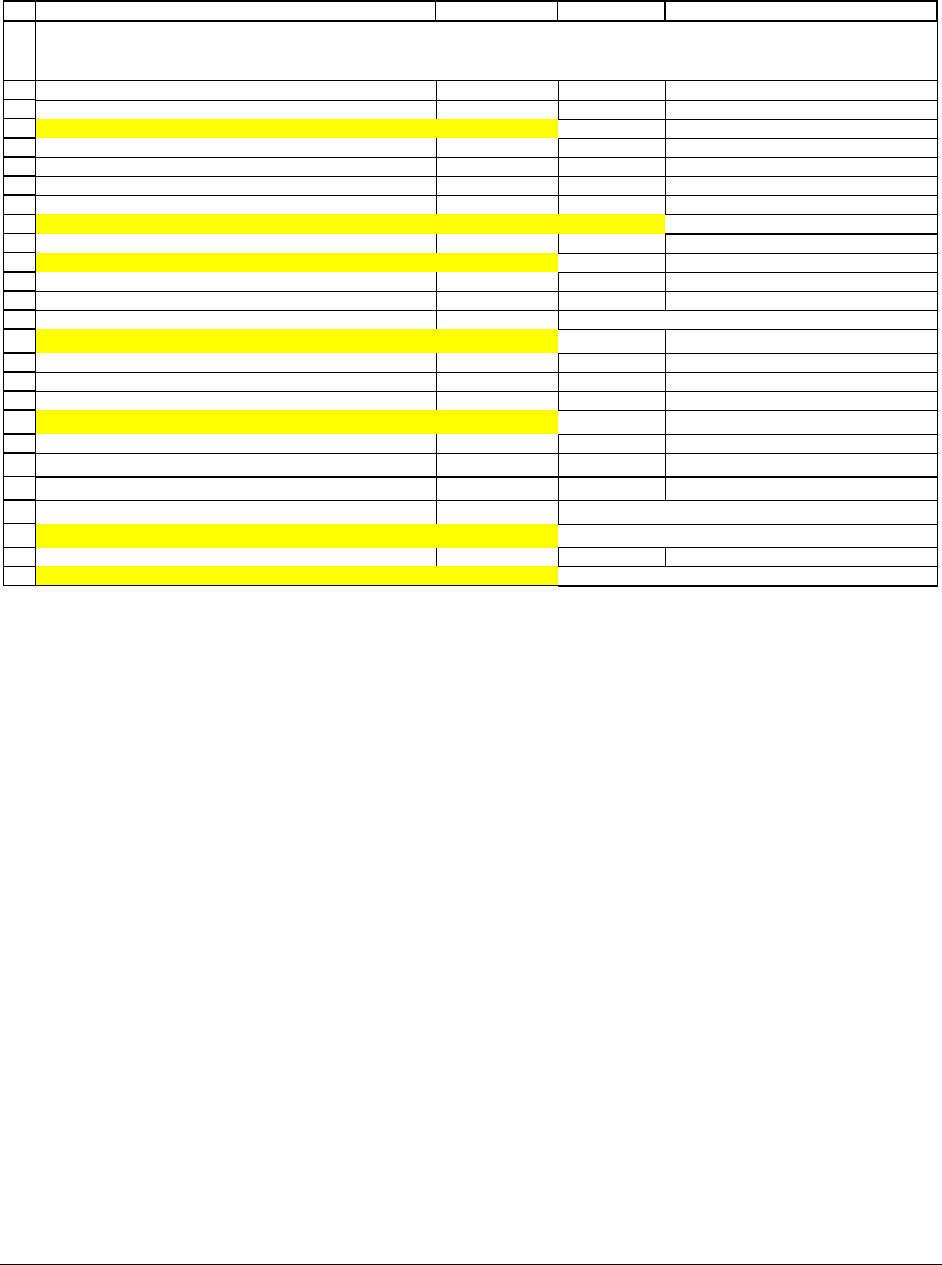
PFE Chapter 18, Stock valuation Page 33
Here it is in a spreadsheet:
1
2
3
4
5
6
7
8
9
10
11
12
13
14
15
16
17
18
19
20
21
22
23
24
25
26
ABCD
Number of shares (million) 908
Market value per share, 1 February 2002 28.21
Market value of equity 1 February 2002, E 25,619 <-- =B3*B2
2002 2001
Current portion of long-term debt and notes payable 975 905
Long-term debt in 2002 and 2001 (columns B and C)
7,523 7,054
Total debt, D
8,498 7,959 <-- =C8+C7
Market value of Target, E+D
34,117 <-- =B9+B4
Interest paid, 2002
588
Average debt over 2002
8,229 <-- =AVERAGE(B9:C9)
Interest cost, r
D
7.15% <-- =B13/B14
Earnings before taxes, 2002
2,676
Income taxes
1,022
Corporate tax rate, T
C
38.19% <-- =B18/B17
Equity beta, β
E
1.16
Risk-free rate, r
f
2%
Expected market return, E(r
M
)
9.68% <-- See discussion below
Cost of equity, r
E
10.91% <-- =B22+B21*(B23-B22)
WACC 9.29% <-- =B4/B11*B24+(1-B19)*B9/B11*B15
TARGET CORP.'S WACC USING
SML FOR COST OF EQUITY
Computing the expected return on the market
(
)
M
Er
The most controversial part of estimating the cost of capital using the CAPM is the
estimation of the expected return on the market
(
)
M
Er . We discussed this issue and some
methods of estimation in Chapter 14. To recapitulate: We advocate using a P/E multiple model
for estimating the equity premium. This model, presented in Chapter 14 and briefly reviewed in
the box below, gives us
()
M
E
r
= 9.68%.
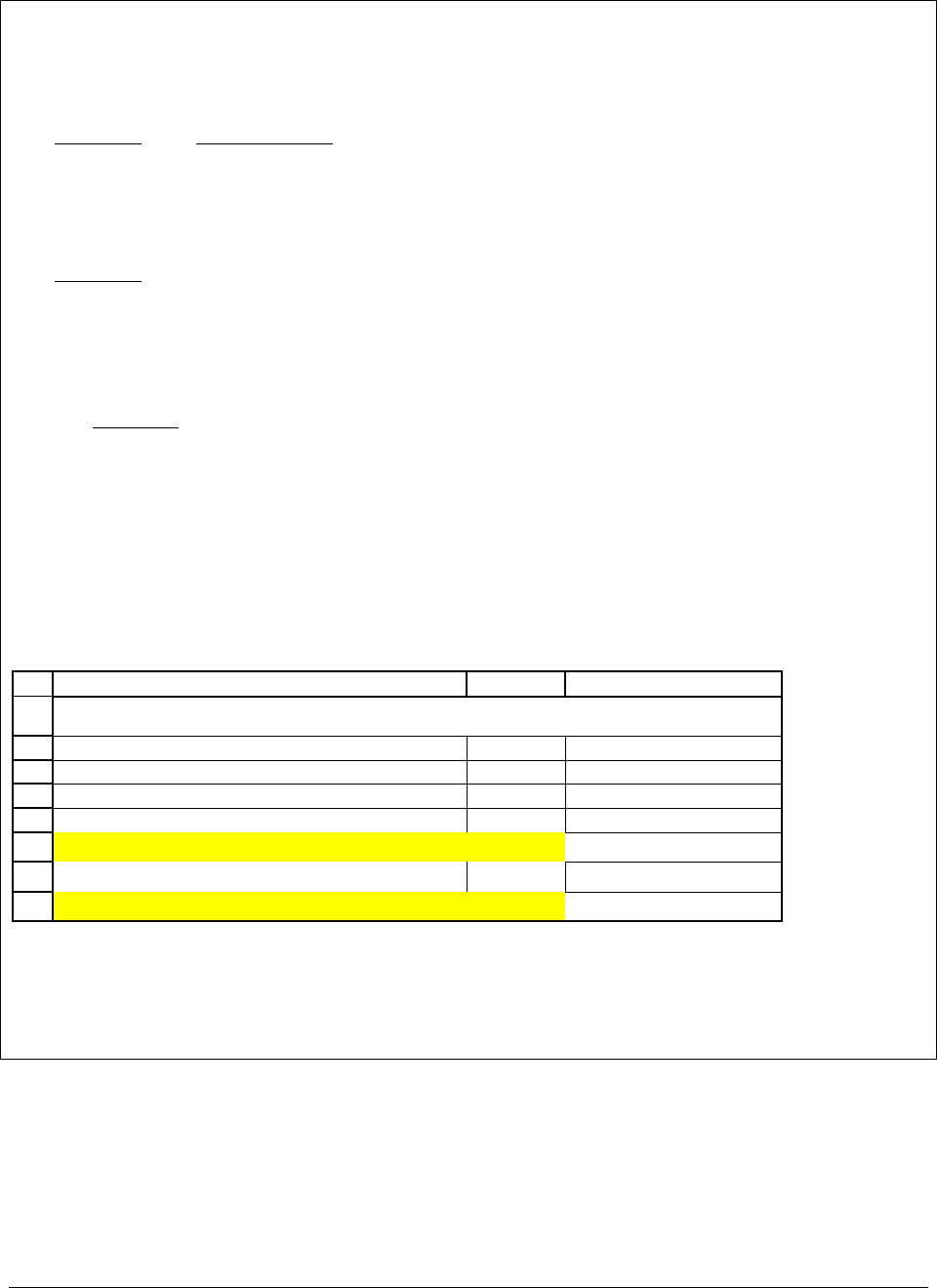
PFE Chapter 18, Stock valuation Page 34
P/E Multiple Model for Estimating E(r
M
)
We start with the payout form of the Gordon dividend model:
(
)
(
)
()
0
00
00
Gordon dividend is the dividend payout
model ratio, EPS is the current
firm earnings per share
00
1*1
*1
/
E
b
Dg bEPSg
rg g
PP
bg
g
PEPS
↑↑
++
=+= +
+
=+
This model is now used to measure the E(r
M
), using current market data:
()
(
)
00
00
*1
/
where
b= (in U.S. around 50%)
g= (educated guess)
/-
M
bg
Er g
P EPS
market payoutratio
growth rate of marketearnings
P EPS market price earnings ratio
+
=+
=
Here’s an Excel example:
1
2
3
4
5
6
7
8
ABC
ESTIMATING E(r
M
) USING THE P/E RATIO
Market P/E ratio 20.00
Market dividend payout ratio,
b
50%
Estimated growth of market earnings,
g
7%
E(r
M
)
9.68% <-- =B3*(1+B4)/B2+B4
Risk-free rate,
r
f
2.00%
Market risk premium, E(r
M
) - r
f
7.68% <-- =B6-B7
We use these values—representative of market parameters in the U.S. in early 2003—in our
determination of the Target Corp. cost of equity r
E
.
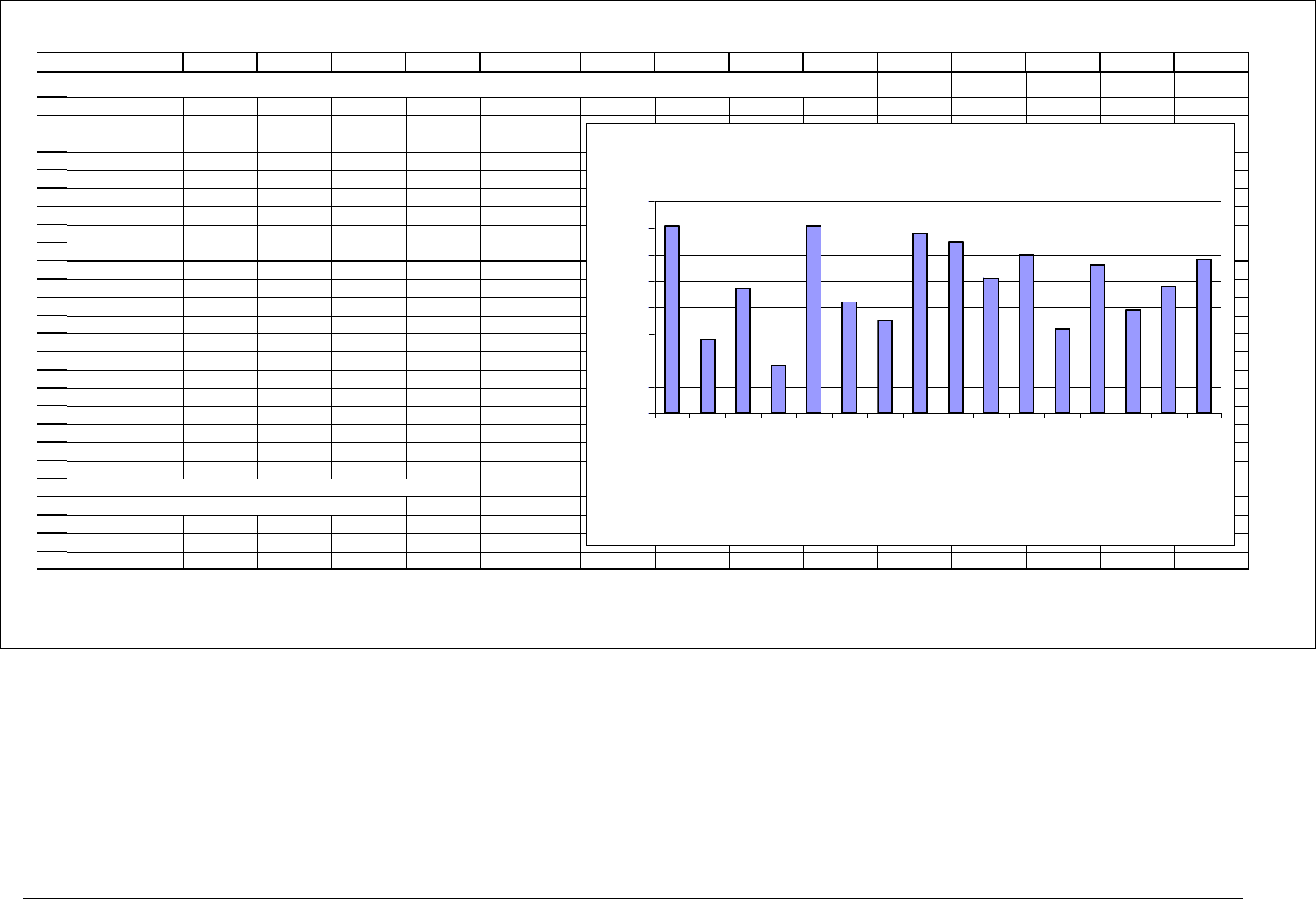
PFE Chapter 18, Stock valuation Page 35
1
2
3
4
5
6
7
8
9
10
11
12
13
14
15
16
17
18
19
20
21
22
23
24
25
26
ABCDEFGHIJKLMNO
ANNUALIZED REAL RETURNS ON EQUITIES, BONDS, AND BILLS, 1900-2000
Equities Bonds Bills
Equit
y
premium
Australia 7.50% 1.10% 0.40% 7.10% <-- =B4-D4
Belgium 2.50% -0.40% -0.30% 2.80% <-- =B5-D5
Canada 6.40% 1.80% 1.70% 4.70%
Denmark 4.60% 2.50% 2.80% 1.80%
France 3.80% -1.00% -3.30% 7.10%
Germany 3.60% -2.20% -0.60% 4.20%
Ireland 4.80% 1.50% 1.30% 3.50%
Italy 2.70% -2.20% -4.10% 6.80%
Japan 4.50% -1.60% -2.00% 6.50%
Netherland 5.80% 1.10% 0.70% 5.10%
South Africe 6.80% 1.40% 0.80% 6.00%
Spain 3.60% 1.20% 0.40% 3.20%
Sweden 7.60% 2.40% 2.00% 5.60%
Switzerland 5.00% 2.80% 1.10% 3.90%
United Kingdom 5.80% 1.30% 1.00% 4.80%
United States 6.70% 1.60% 0.90% 5.80%
Average 5.11% 0.71% 0.18% 4.93%
Source: Elroy Dimson, Paul Marsh, Mike Staunton, Triumph
of the Optimists, Princeton University Press 2002
Equity Premium in 16 Countries, 1900-2000
0.0%
1.0%
2.0%
3.0%
4.0%
5.0%
6.0%
7.0%
8.0%
Australia
Belgium
Canada
Denmark
France
Germany
Ireland
Italy
Japan
Netherland
South Africe
Spain
Sweden
Switzerland
United Kingdom
United States
Figure 18.6. The equity premium in 16 major economies over the 20
th
century.

PFE Chapter 18, Stock valuation Page 36
18.7. Computing Target’s cost of equity r
E
with the Gordon model
An alternative to the CAPM for computing the cost of equity r
E
is the Gordon model,
which we’ve previously discussed in Chapter 6. The Gordon model says that the equity value is
the discounted value of future anticipated dividends. The standard version of the Gordon model
is:
()
0
0
0
0
1
where
current equity payout of firm (total dividends + stock repurchases)
current market value of equity
anticipated equity payout growth rate
E
Div g
rg
P
Div
P
g
+
=+
=
=
=
For reasons explained in Chapter 6, we think the Gordon model should be used with the
total equity payout, defined as total dividends plus stock repurchases. Below is the calculation
for Target Corp.’s WACC using the Gordon model. The spreadsheet is the same as that of the
previous section, except:
•
Rows 32-36 show Target’s equity payouts—the sum of its dividends and share
repurchases—in each of the last five years. The compound annual growth rate of the
equity payouts is 8.89% per year (cell D38).
•
Rows 22-25 show the Gordon model calculation of the cost of equity r
E
. This is
computed as:
()
(
)
0
0
0
0
1 232* 1 8.89%
8.89% 9.88%
25,619
where
current equity payout
current market value of equity
anticipated equity payout growth rate
E
Div g
rg
P
Div
P
g
++
=+= +=
=
=
=

PFE Chapter 18, Stock valuation Page 37
1
2
3
4
5
6
7
8
9
10
11
12
13
14
15
16
17
18
19
20
21
22
23
24
25
26
27
28
29
30
31
32
33
34
35
36
37
38
ABCDE
Number of shares (million) 908
Market value per share, 1 February 2002 28.21
Market value of equity 1 February 2002, E 25,619 <-- =B3*B2
2002 2001
Current portion of long-term debt and notes payable 975 905
Long-term debt
7,523 7,054
Total debt, D
8,498 7,959 <-- =C8+C7
Market value of Target, E+D
34,117 <-- =B9+B4
Interest paid, 2002
588
Average debt over 2002
8,229 <-- =AVERAGE(B9:C9)
Interest cost, r
D
7.15% <-- =B13/B14
2002
Earnings before taxes
2,676
Income taxes
1,022
Corporate tax rate, T
C
38.19% <-- =B19/B18
Current equity value
25,619
Current equity payout, Div
0
232 <-- =D36
Growth rate of equity payout
8.89% <-- =D38
Cost of equity, r
E
, using Gordon model
9.88% <-- =B23*(1+B24)/B22+B24
WACC 8.52% <-- =B4/B11*B25+(1-B20)*B9/B11*B15
Year Dividends Repurchases
Total equity
payout
1998 165 0 165
1999 178 0 178
2000 190 585 775
2001 203 20 223
2002 218 14 232
Growth rate 8.89% <-- =(D36/D32)^(1/4)-1
TARGET CORP.'S WACC USING
GORDON MODEL FOR COST OF EQUITY
Dividends and stock repurchases
Using the Gordon model estimate of the cost of equity, Target’s WACC is 8.52% (cell
B27).
Summing up
This chapter has discussed a grab-bag of share valuation methods. Three of these
methods could be termed “fundamental valuations.” Valuation Method 1, the simplest of the
fundamental valuation methods is based on the assumption of market efficiency and says that a
firm’s stock is worth its current market price. Simple as it is, this approach has a lot of power

PFE Chapter 18, Stock valuation Page 38
and support in the academic community: If market participants have done their work, then the
current price of a share reflects all publicly-available information, and there’s nothing else to do.
Valuation method 2, discounted cash flow (DCF) valuation, is the method preferred by
most finance academics and many finance practitioners. This method is based on discounting
the firm’s projected future free cash flows (FCF) at an appropriate weighted average cost of
capital. The discounted value arrived at in this way is called the firm’s enterprise value. To
arrive at the valuation of the firm’s equity, we add cash and marketable securities to the
enterprise value and subtract the value of the firm’s debt. Dividing by the number of shares
gives the per-share valuation.
Valuation method 3, the direct equity valuation, discounts the projected payouts to equity
holders (defined as the sum of dividends plus share repurchases) by the firm’s cost of equity r
E
.
The resulting present value is the value of the firm’s equity. Although it appears simpler and
more direct than the FCF valuation, direct equity valuation is usually shunned by finance
professionals. This is primarily because the cost of equity is heavily dependent on a firm’s debt-
equity financing mix, whereas the WACC is not nearly as dependent (and perhaps independent)
of the debt-equity mix.
Valuation method 4, multiple valuation is widely used. This method of valuation arrives
at a relative valuation of the firm by comparing a set of relevant multiples for comparable firms.
When used correctly, multiple valuations can be a powerful tool, but it is often difficult to arrive
at a correct “peer group” for a particular firm.

PFE Chapter 18, Stock valuation Page 39
Exercises
1. Do a closed-end exercise based on ABC Holding Corp. Assume that ABC has some costs.
Illustrate the closed-end fund discount.
Thought question: Are you better off buying ABC or the proportions of its subsidiaries?
2. Go back to ABC Holdings:
60%* * 50%* *
X
YZ share numberof QRM share numberof
ABC share
p
rice XYZ shares price QRM shares
numberof
price
ABC shares
⎡⎤⎡ ⎤
+
⎢⎥⎢ ⎥
⎣⎦⎣ ⎦
=
Suppose you know the share price of ABC and the share price of QRM. What should be the
market price of XYZ?

PFE Chapter 19, Stock valuation page 1
CHAPTER 19: VALUING STOCKS
*
This version: February 13, 2004
Chapter contents
Overview..............................................................................................................................2
19.1. Valuation method 1: The current market price of a stock is the correct price (the efficient
markets approach)................................................................................................................4
19.2. Valuation method 2: The price of a share is the discounted value of the future anticipated
free cash flows .....................................................................................................................7
19.3. Valuation method 3: The price of a share is the present value of its future anticipated
equity cash flows discounted at the cost of equity.............................................................18
19.4. Valuation method 4, comparative valuation: Using multiples to value shares.......21
19.5. Intermediate summary .............................................................................................28
19.6. Computing Target’s WACC, the SML approach ....................................................28
19.7. Computing Target’s cost of equity r
E
with the Gordon model ................................36
Summing up.......................................................................................................................37
Exercises ............................................................................................................................39
*
This is a preliminary draft of a chapter of Principles of Finance with Excel. © 2001 – 2004 Simon Benninga
(benninga@wharton.upenn.edu
).
